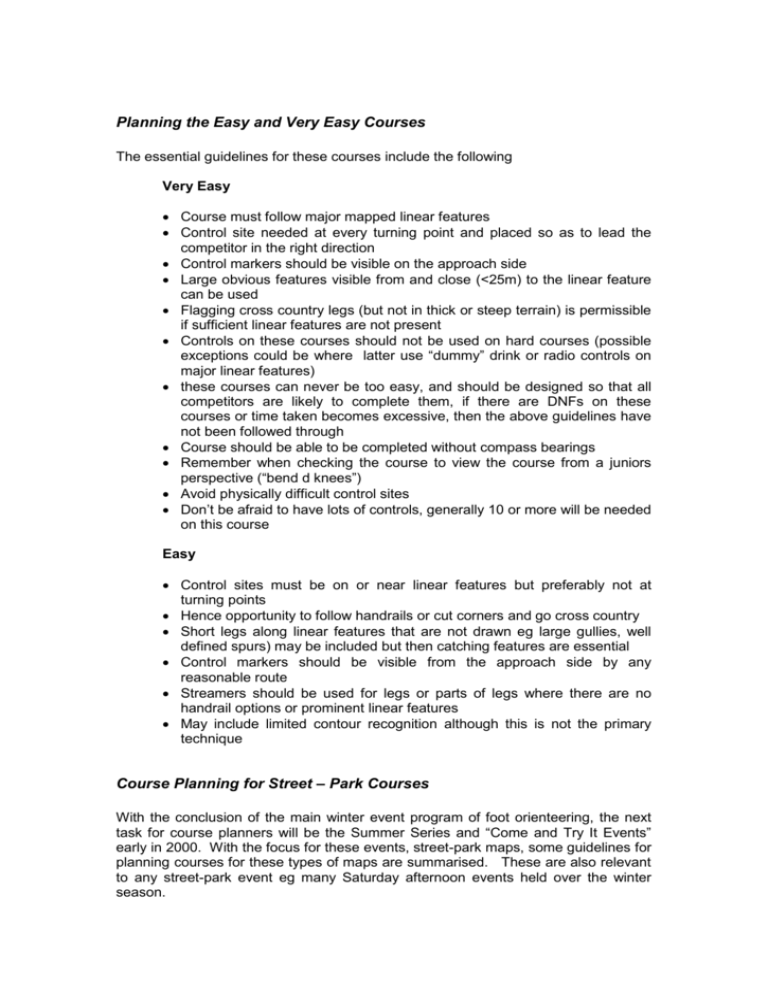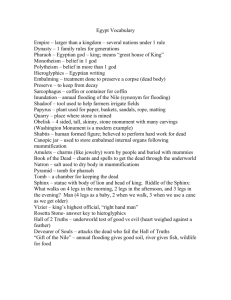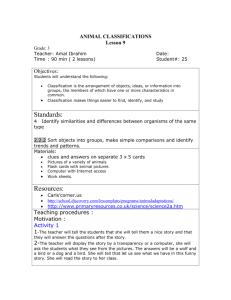Course Planning Easy, Very Easy and Street
advertisement

Planning the Easy and Very Easy Courses The essential guidelines for these courses include the following Very Easy Course must follow major mapped linear features Control site needed at every turning point and placed so as to lead the competitor in the right direction Control markers should be visible on the approach side Large obvious features visible from and close (<25m) to the linear feature can be used Flagging cross country legs (but not in thick or steep terrain) is permissible if sufficient linear features are not present Controls on these courses should not be used on hard courses (possible exceptions could be where latter use “dummy” drink or radio controls on major linear features) these courses can never be too easy, and should be designed so that all competitors are likely to complete them, if there are DNFs on these courses or time taken becomes excessive, then the above guidelines have not been followed through Course should be able to be completed without compass bearings Remember when checking the course to view the course from a juniors perspective (“bend d knees”) Avoid physically difficult control sites Don’t be afraid to have lots of controls, generally 10 or more will be needed on this course Easy Control sites must be on or near linear features but preferably not at turning points Hence opportunity to follow handrails or cut corners and go cross country Short legs along linear features that are not drawn eg large gullies, well defined spurs) may be included but then catching features are essential Control markers should be visible from the approach side by any reasonable route Streamers should be used for legs or parts of legs where there are no handrail options or prominent linear features May include limited contour recognition although this is not the primary technique Course Planning for Street – Park Courses With the conclusion of the main winter event program of foot orienteering, the next task for course planners will be the Summer Series and “Come and Try It Events” early in 2000. With the focus for these events, street-park maps, some guidelines for planning courses for these types of maps are summarised. These are also relevant to any street-park event eg many Saturday afternoon events held over the winter season. Because of the nature of the maps, hard navigational courses cannot be set, however locally parts of the map allow moderate to hard legs. Although overall the courses are easier, some general principles of course planning still apply, with the extra consideration that the location in built up areas requires that courses avoid major roads and other hazards. On longer courses, aim for route choice and a variety of legs, this adds interest to the course, splits up runners, and allows them to still practice some basic orienteering techniques. Try and avoid dog-legs, ie don’t have the most obvious route to a control the same as the exit route. Watch out for physical barriers eg uncrossable fences and creeks, major highways etc. Don’t encourage participants to cross private property and other Out of Bounds areas. For the shorter courses which may be undertaken by younger and less experienced orienteers, try and minimise the number of road crossings, and concentrate on park areas on the map.











